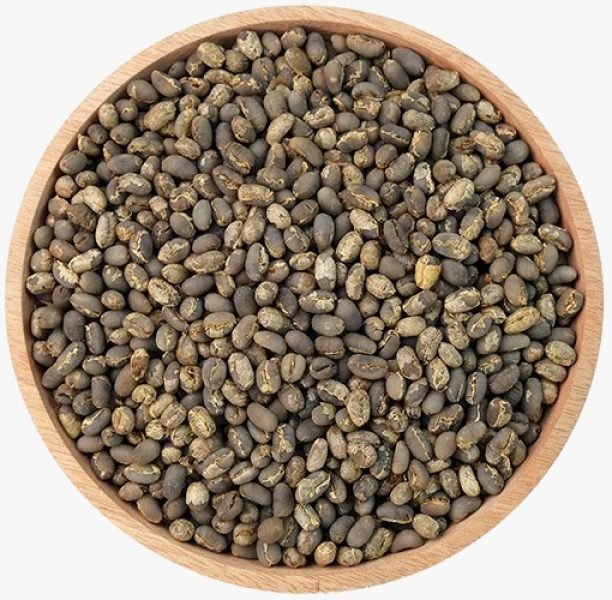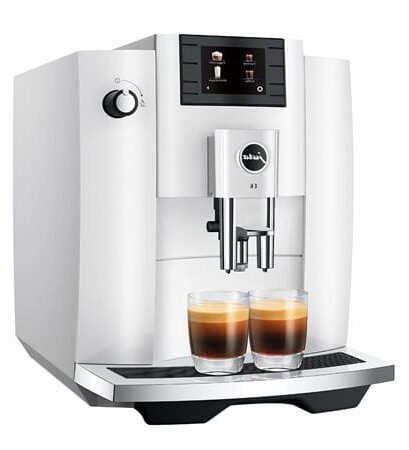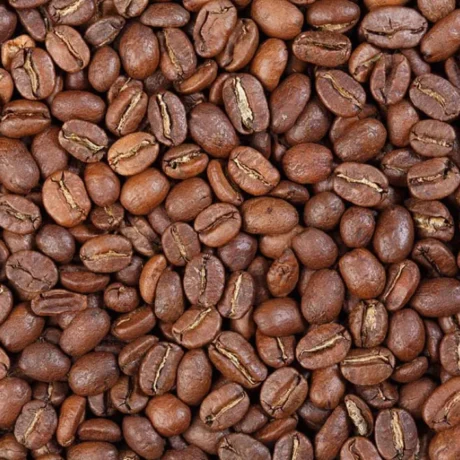What “Sumatra Super Peaberry” Actually Is
Peaberry is a natural coffee cherry outcome where a single round seed develops instead of the usual two flat seeds. This occurs in a small fraction of the harvest and concentrates density and heat transfer during roasting, which supports even development and focused flavor in the cup.
Sumatra’s peaberries stand out because they come from high-elevation Northern Sumatra—especially Aceh—where soil, altitude, and climate supercharge body, aroma, and aftertaste. For a quick primer on this origin’s wider taste DNA, read Sumatra Coffee: Taste Characteristics and the Best Brewing Method and the region deep dive Discover Sumatra.
Want to choose precisely from Aceh? Use this practical selector: Choosing the Best Aceh Gayo Green Coffee Beans.
Aceh Terroir: Why This Origin Tastes So Distinct
Altitude (≈1,200–1,700 m), volcanic soils, and abundant rainfall define Aceh’s terroir. Trees feed on mineral-rich substrates that enhance sweetness, mouthfeel, and aromatic intensity. Elevation slows cherry maturation, building complex sugars and nuanced acids that read as dark chocolate, forest spice, and a gentle fruit lift.
To widen your origin context and editorial depth, link readers to Discover Sumatra and agronomic practices that sustain cup quality such as Intercropping in Coffee Cultivation (Tumpang Sari).
Wet-Hulling (Giling Basah) and Flavor Formation
Sumatra’s hallmark process is wet-hulling (Giling Basah)—parchment is removed at a higher bean moisture than in fully washed coffees. The result is heavier body, lower perceived acidity, and cocoa-earth depth with resinous spice. Many Aceh peaberries are processed this way, delivering the syrupy texture that coffee bars rely on for dense espresso and satisfying filter cups.
- Process overview: Specialty Coffee Processing
- Sumatra flavor context: Sumatra Coffee
Flavor Profile & Sensory Map
Aroma: cedar, cacao nib, sweet tobacco
Acidity: gentle, fruit-like brightness that never needles
Sweetness: dark caramel and palm sugar tones
Body: viscous, round, creamy
Finish: long, chocolaty, with lingering spice
Peaberry vs. flat bean—what you taste:
- Focus: peaberry roasts transfer heat evenly, delivering clearer chocolate and cleaner bass notes.
- Texture: peaberry density supports silky body without muddiness.
- Clarity: you get defined origin markers even at medium-dark development.
If you want a quick flavor-setup article for customers, link to Combining and Savoring Indonesian Coffee with Espresso.
Brewing Sumatra Super Peaberry: Proven Methods
Peaberry density rewards consistent heat and water management. Use precise ratios and fresh, medium-fine to medium-coarse grinds depending on brew method.
A) Pour-Over (Kalita/Conical)
- Ratio: 1:15 to 1:16
- Grind: medium-fine
- Method: bloom 30–40 s, pulse pours to total 2:30–3:00
- Cup goal: articulate cocoa-fruit balance with a clean, silky finish
Guides to interlink: Brewing Time: Pour-Over Coffee and Perfect Coffee Measurements.
B) French Press
- Ratio: 1:14
- Grind: medium-coarse
- Steep: 4 minutes; stir, settle 30 s, press gently
- Cup goal: maximum body with polished bittersweet chocolate
Reference: The Art of French Press Coffee Ratio.
C) Espresso
- Recipe: 1:2 to 1:2.2 in 26–30 s (e.g., 18 g in → 36–40 g out)
- Roast: medium-to-medium dark for crema and texture
- Cup goal: dense chocolate, spice glide, thick mouthfeel
Explain roast expectations with Espresso vs. Dark Roast Coffee Beans.
D) Cold Brew
- Ratio: 1:6 concentrate, steep 12–16 h at 4–6°C; dilute to taste
- Cup goal: low-acid cocoa sweetness with cooling spice
Reference: Cold Brew Coffee: Facts and Health Benefits.
Roast Strategy for Peaberries
Peaberries thrive with medium to medium-dark development. Aim for:
- Even surface color (peaberries roast uniformly)
- End-of-first crack development to lock chocolate and structure
- Limited roastiness—you want spice-chocolate, not carbon
When your audience debates roast style, send them to Espresso vs. Dark Roast Coffee Beans for a clean decision path.
Buyer’s Guide: Grades, Sourcing, and Quality Control
Screen & Grade: Specify screen 16+ or 17/18 for top peaberry lots. Indonesia uses a defect-based national grading—align your contracts to that standard and your QC lab’s SCA protocols for frictionless acceptance.
- Indonesian grading primer: Indonesian National Standards for Green Coffee Beans: Grading System
- Specialty grading context: Cup Above the Rest: The World of Specialty Coffee Grading
- Cupping rigor: SCA Cupping Form: The Secret to Becoming a Coffee Pro
Sourcing & Supplier Fit:
- Verify sample-to-lot accuracy, calibrated cupping, and traceable lots.
- Confirm moisture 11–12% and clean water activity at shipment.
- Require liner bags and desiccants for sea freight.
Your commercial readers convert faster with these buyer-oriented posts:
- Where to Buy Green Coffee Beans: Things to Consider
- How to Find the Best Specialty Coffee Beans Suppliers
- Find the Right Green Coffee Bean Distributor
- For sampler-driven discovery, link to Coffee Sampler Packs: Discover the Exquisite Aroma of Indonesian Coffee.
Storage & Freshness: Keep the Cup at Its Peak
Protect peaberry’s clarity and body with airtight storage, cool/dry environments, and limited oxygen exposure. For long holds, use freezing to lock volatile aromatics without staling.
- Day-to-day best practices: Store Coffee Beans
- Why containers matter: Why Is a Coffee Canister Important?
- Extended retention: Freezing Coffee Beans
- Extra freshness tactics: Guide to Extending the Life and Aroma of Coffee Beans
Traveling with beans? Point readers to Can I Take Coffee Beans on a Plane?.
Caffeine, Health, and Daily Rituals
Arabica generally carries ~1.2% caffeine by weight, which delivers steady focus without harsh bitterness when roasted and extracted correctly. Sumatra Super Peaberry aligns with that range, presenting smooth energy and rounded flavor.
Health explainers your audience trusts:
Sustainability & Traceability (EUDR-Ready)
Sumatra Super Peaberry also appeals to buyers who require documented traceability and deforestation-free sourcing. Build confidence with farm polygons, due-diligence records, and clean chain-of-custody.
Use these cornerstone pages to educate and rank for regulatory head terms:
FAQ
Q1. What makes Sumatra Super Peaberry different from regular Sumatra beans?
A single round seed forms instead of two flat seeds, concentrating roast uniformity, body, and chocolate-forward clarity. Explore regional taste markers in Sumatra Coffee: Taste Characteristics.
Q2. What brewing method showcases it best?
Pour-over for clarity and balance, French press for maximum body, espresso for dense chocolate. Get exact steps in Brewing Time: Pour-Over Coffee and The Art of French Press Coffee Ratio.
Q3. How rare is peaberry?
Peaberries represent a small share of total yield and are sorted separately. This scarcity supports their price premium and distinct positioning.
Q4. What roast level should I choose?
Medium to medium-dark locks in chocolate, spice, and syrupy body without sacrificing origin clarity. Compare styles in Espresso vs. Dark Roast Coffee Beans.
Q5. How do I store it for peak flavor?
Use airtight canisters, keep beans in a cool, dry place, and consider freezing for long-term retention. Follow Store Coffee Beans and Freezing Coffee Beans.
Q6. Where can I buy Sumatra Super Peaberry or sample Indonesian origins?
Start with vetted suppliers and sampler packs to decide on roast and brew profiles:





